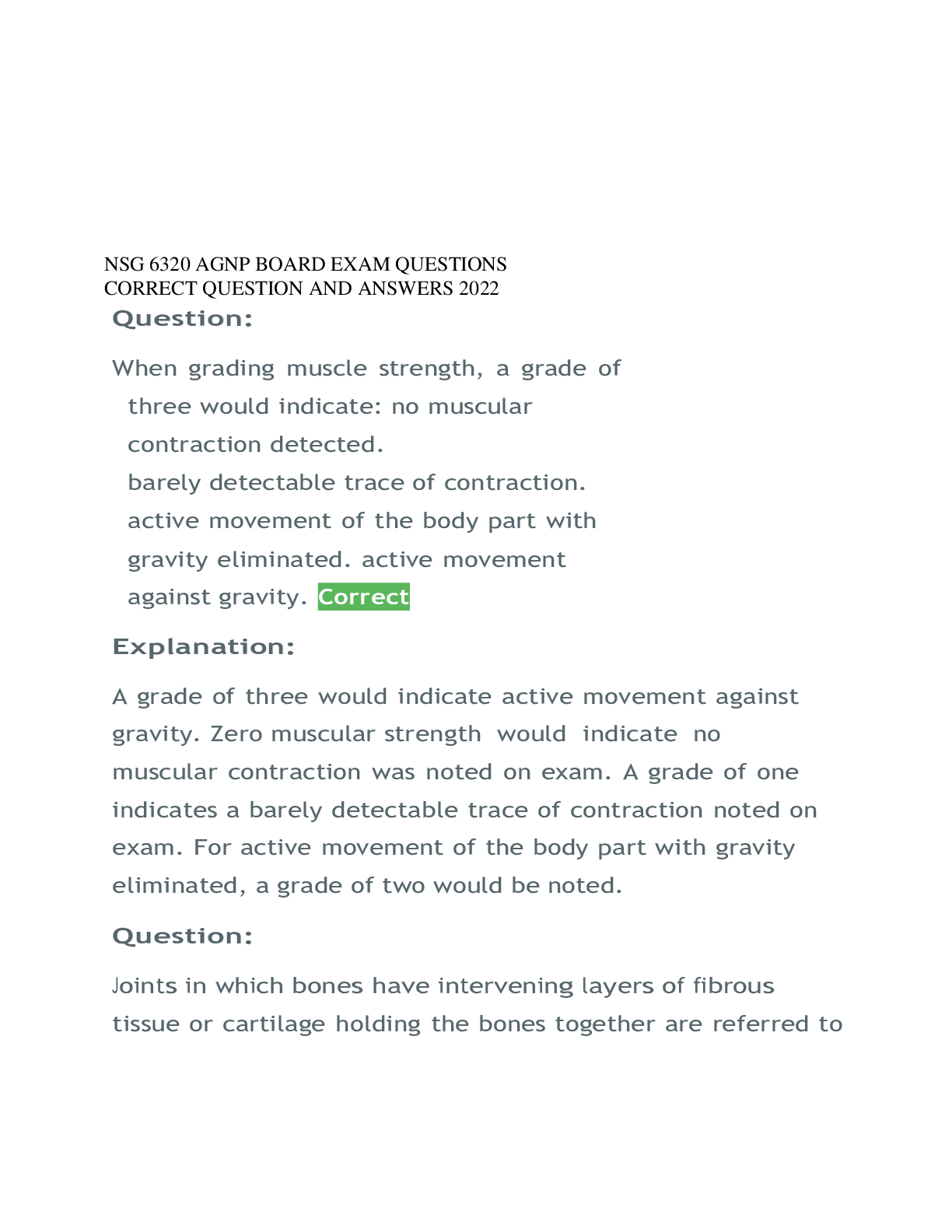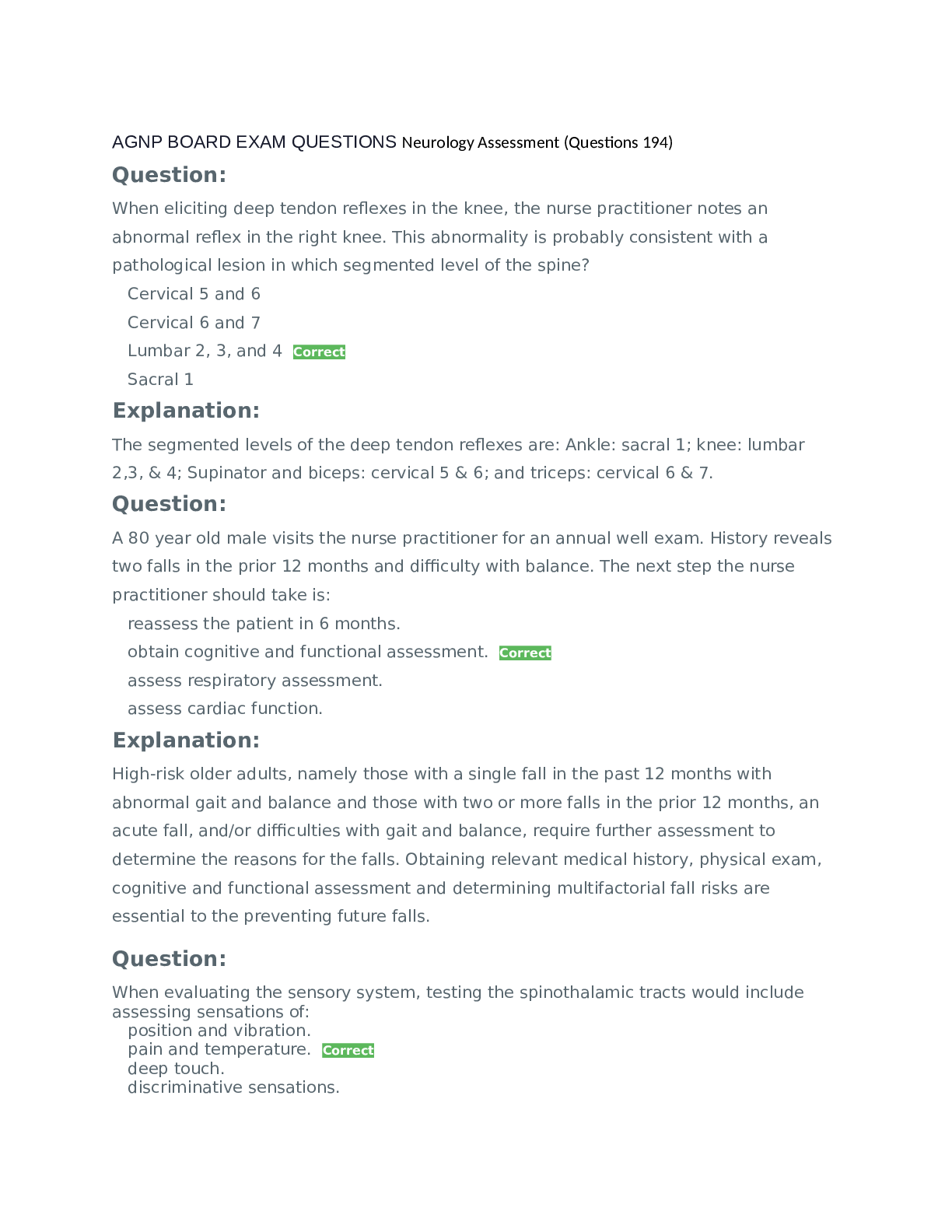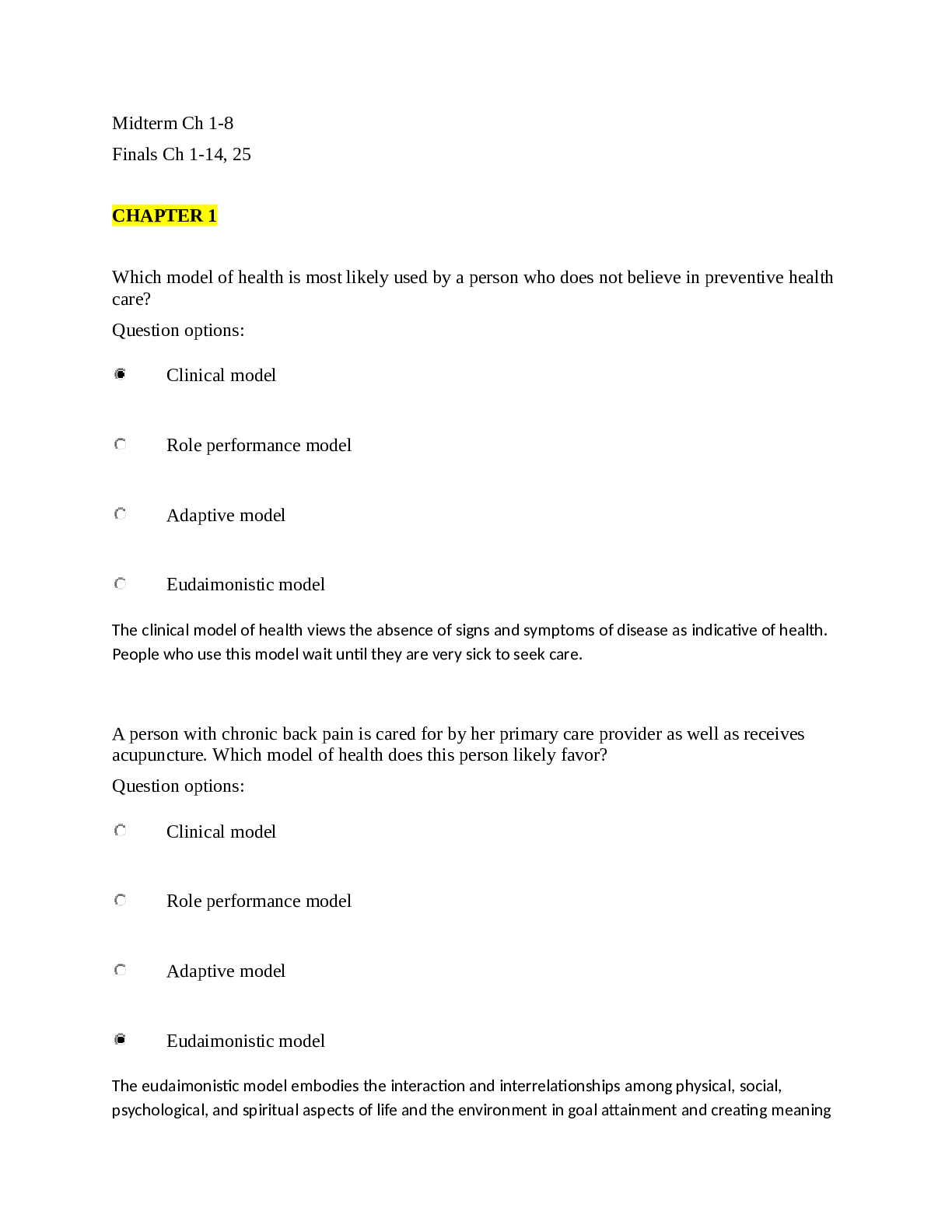*NURSING > QUESTIONS & ANSWERS > NCSBN QBANK with Answers and Rationales. Rated A. LATEST (All)
NCSBN QBANK with Answers and Rationales. Rated A. LATEST
Document Content and Description Below
NCSBN QBANK with Answers and Rationales. Rated A. LATEST The nurse is reviewing the laboratory results for several clients. Which of the laboratory result indicates a client with partly compensated... metabolic acidosis? Chloride 100 mEq/L (100 mmol/L) Sodium 130 mEq/L (130 mmol/L) Hemoglobin 15 g/dL (150 g//L) PaCO2 30 mm Hg - Ans-PaCO2 30 mm Hg The client is admitted to an ambulatory surgery center and undergoes a right inguinal orchiectomy. Which option is the priority before the client can be discharged to home? Able to ambulate in the hallway with assistance Post-operative pain is managed Correct response Able to tolerate a regular diet Psychological counseling is scheduled - Ans-Post-operative pain is managed A child is treated with succimer for lead poisoning. Which of these assessments should the nurse perform first?Test deep tendon reflexes Check blood calcium level Check complete blood count (CBC) with differential Check serum potassium level - Ans-Check complete blood count (CBC) with differential Succimer (Chemet) is used in the management of lead or other heavy metal poisoning. Although it has generally well tolerated and has a relatively low toxicity, it may cause neutropenia. Therapy should be withheld or discontinued if the absolute neutrophil count (ANC) is below 1200/µ. The client with a T-2 spinal cord injury reports having a "pounding" headache. Further assessment by the nurse reveals excessive sweating, rash, pilomotor erection, facial flushing, congested nasal passages and a heart rate of 50. What action should the nurse take next? Place the client into the bed and administer the ordered PRN analgesic Measure the client's respirations, blood pressure, temperature and pupillary responses Check the client for bladder distention and the urinary catheter for kinks Assist client with relaxation techniques - Ans-Check the client for bladder distention and the urinary catheter for kinks These are findings of autonomic dysreflexia, also called hyperreflexia. This response occurs in clients with a spinal cord injury above the T-6 level. It is typically initiated by any noxious stimulus below the level of injury such as a full bladder, an enema or bowel movement, fecal impaction, uterine contractions, changing of the catheter and vaginal or rectal examinations. The stimulus creates an exaggerated response of the sympathetic nervous system and can be a life-threatening event. The BP is typically extremely high. The priority action of the nurse is to identify and relieve the cause of the stimulus. [Show More]
Last updated: 1 year ago
Preview 1 out of 14 pages
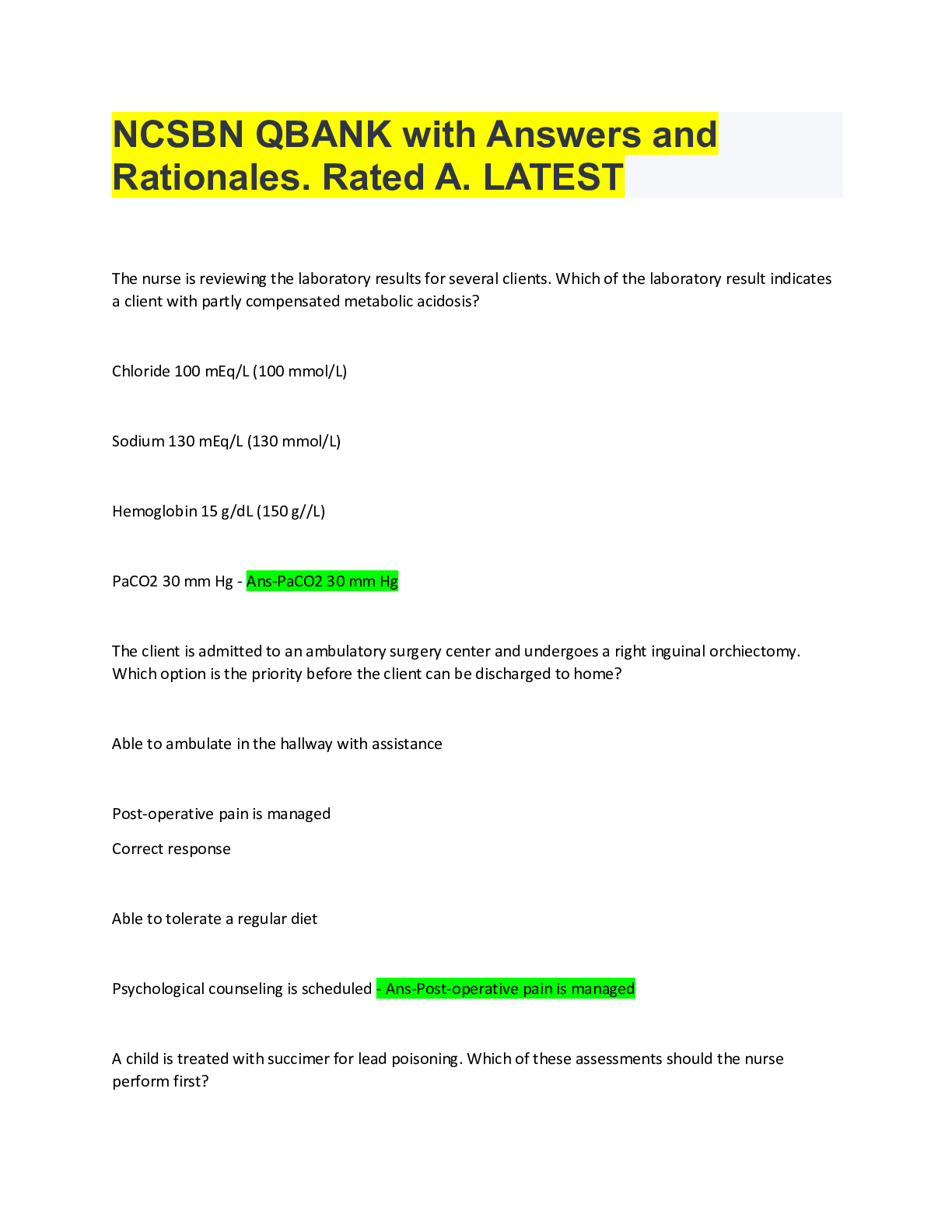
Reviews( 0 )
Document information
Connected school, study & course
About the document
Uploaded On
Jun 28, 2022
Number of pages
14
Written in
Additional information
This document has been written for:
Uploaded
Jun 28, 2022
Downloads
0
Views
75


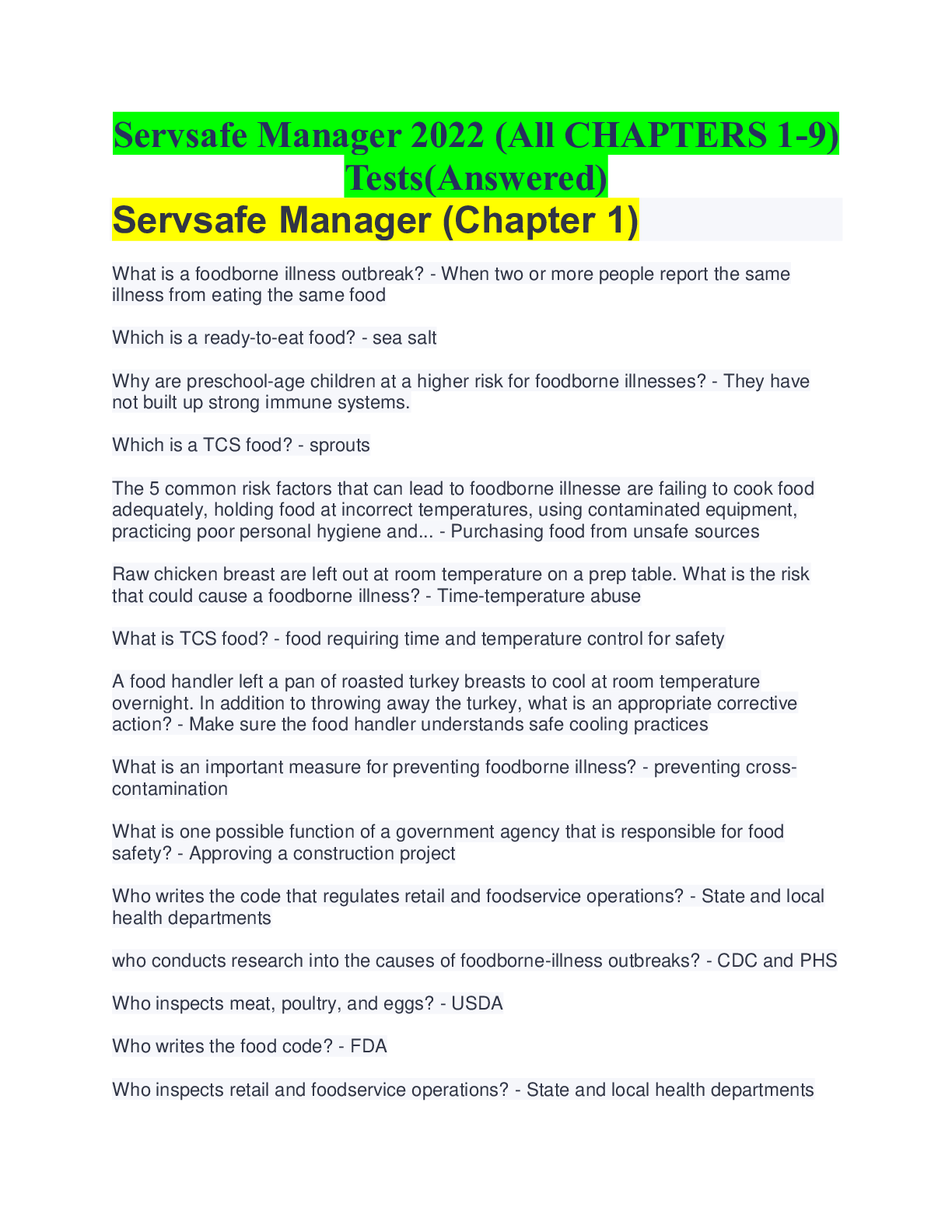
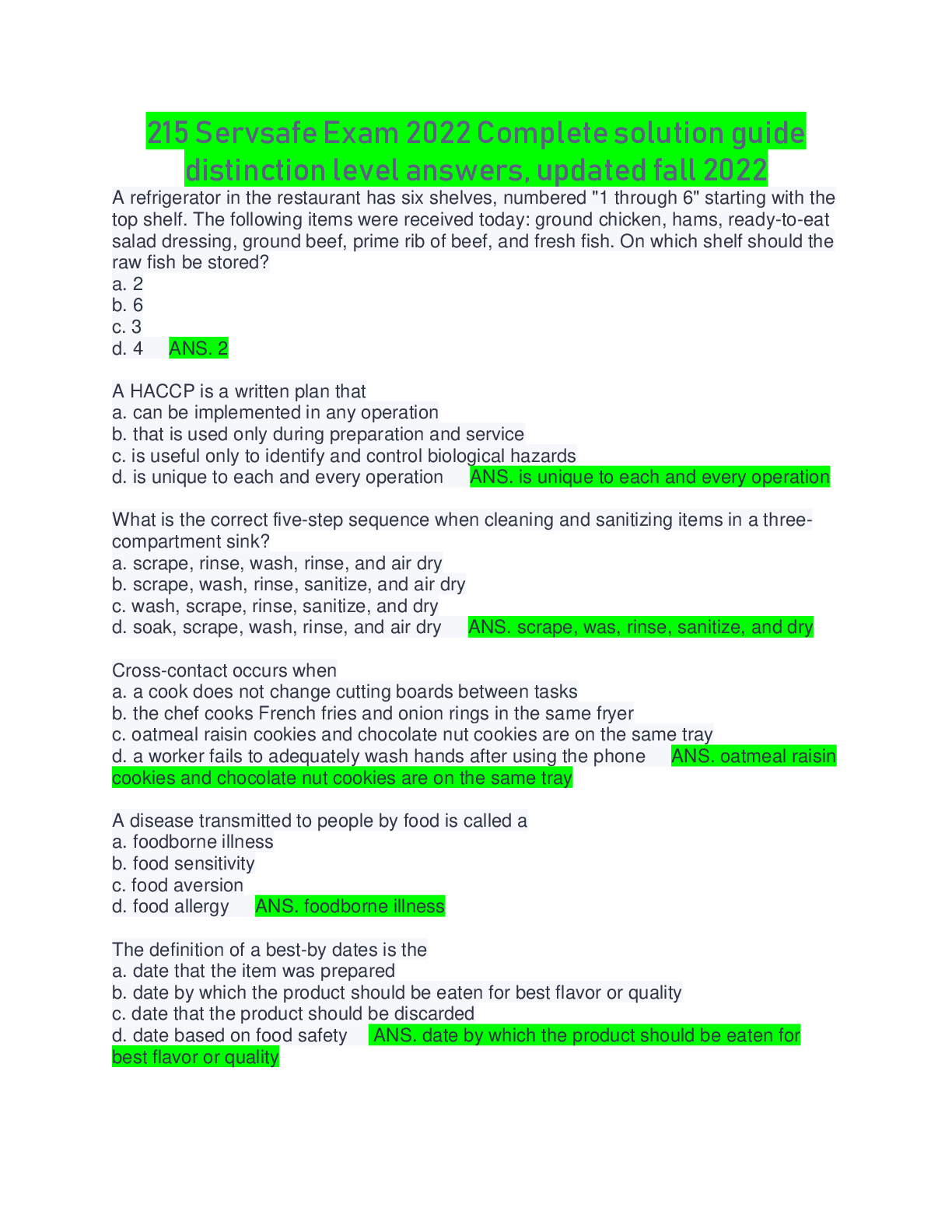
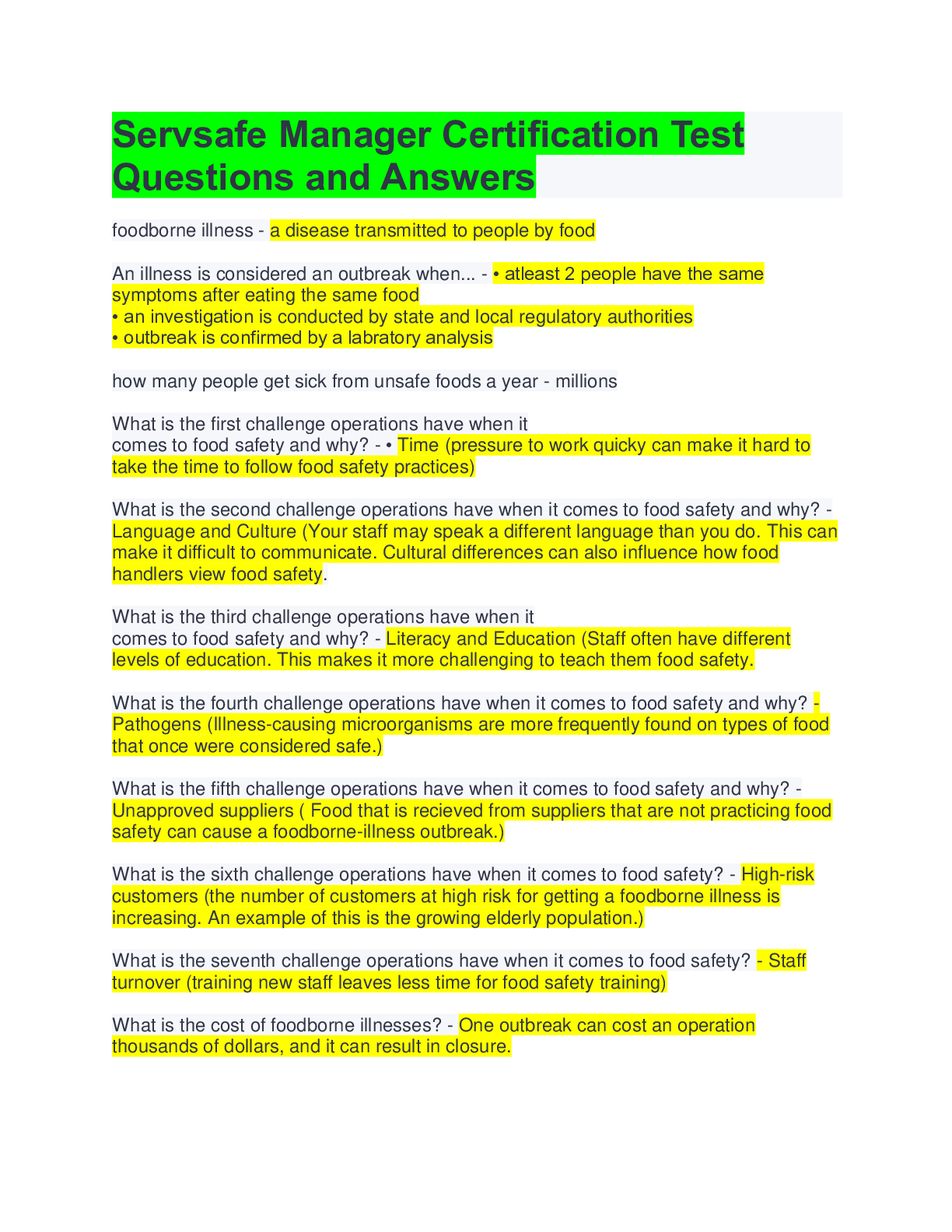
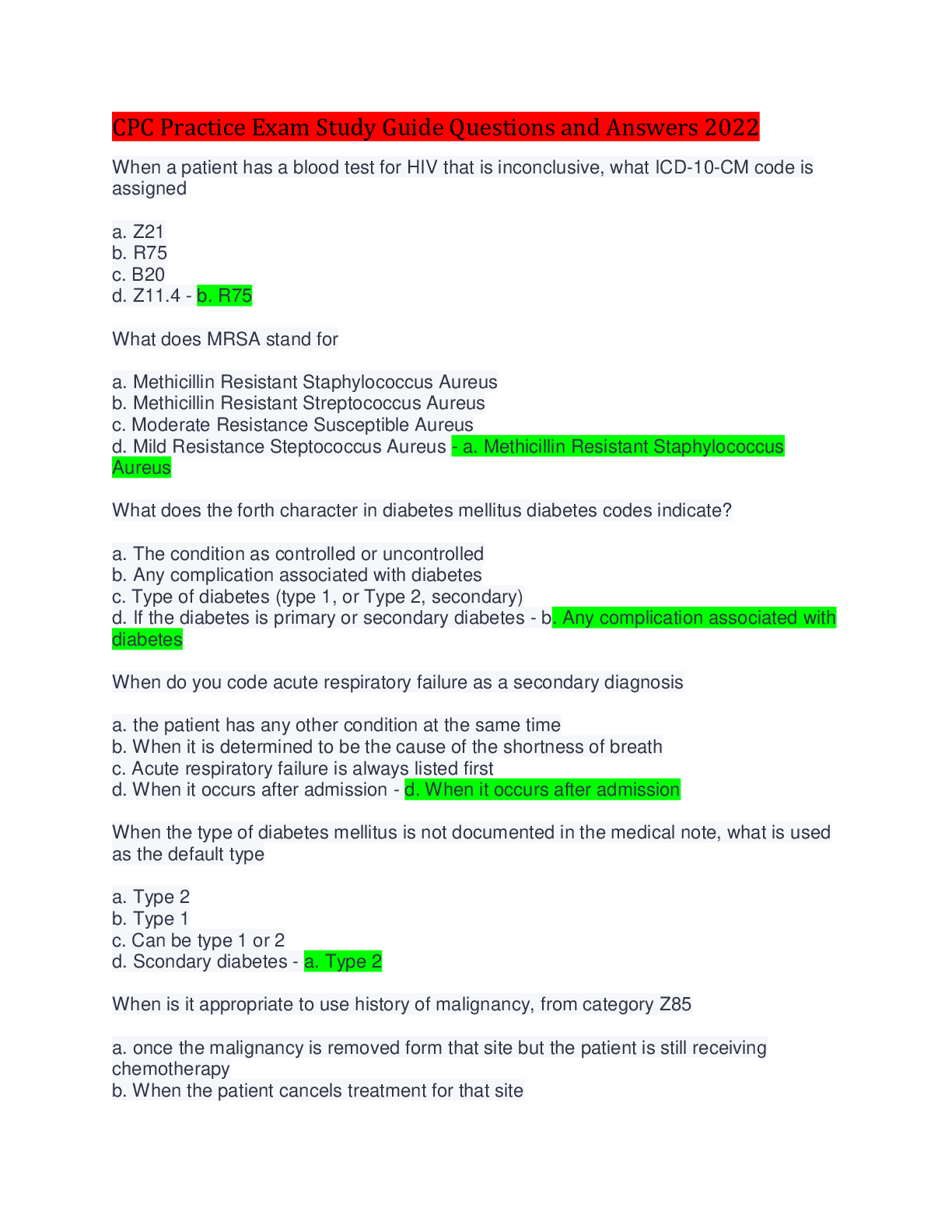
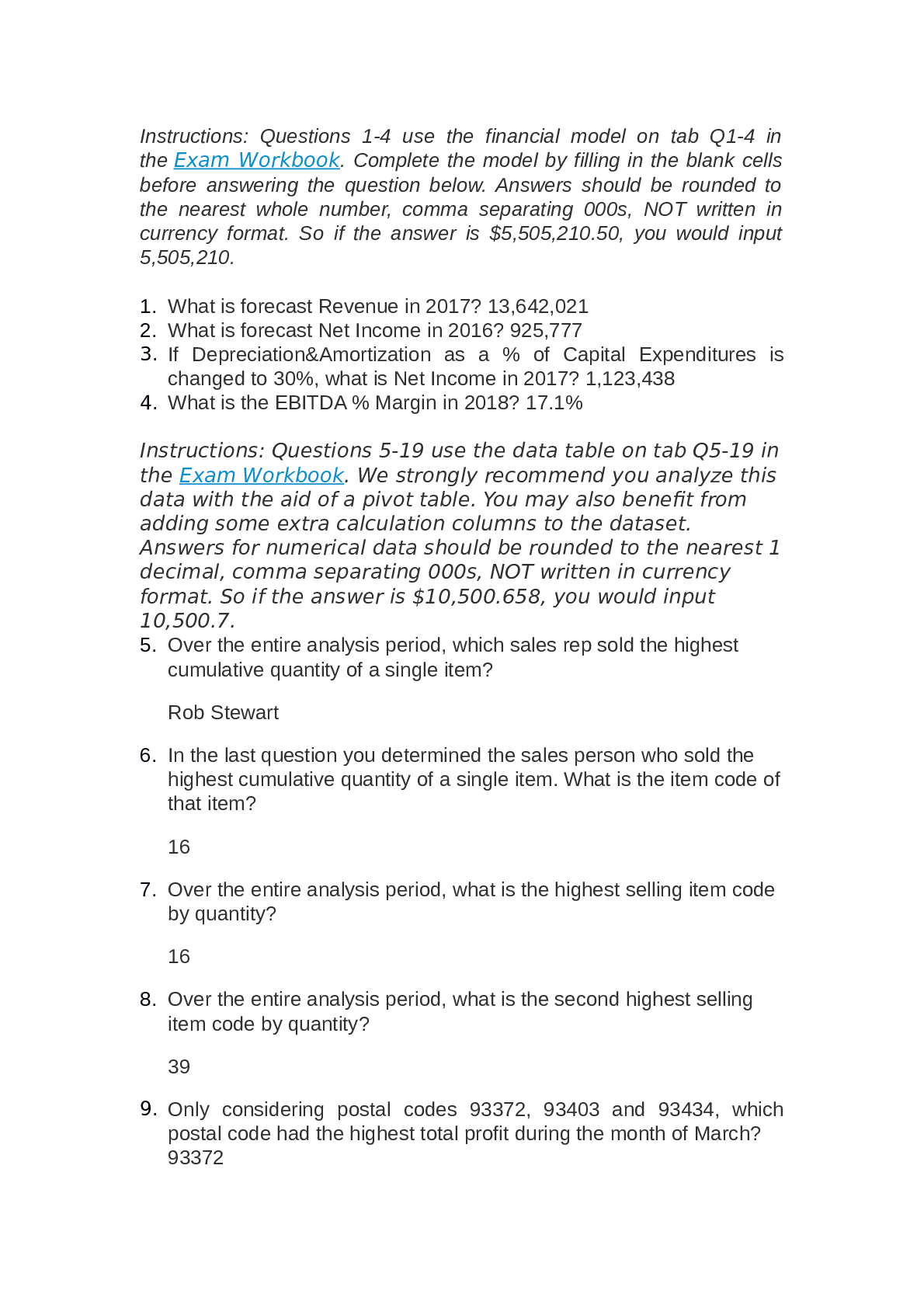
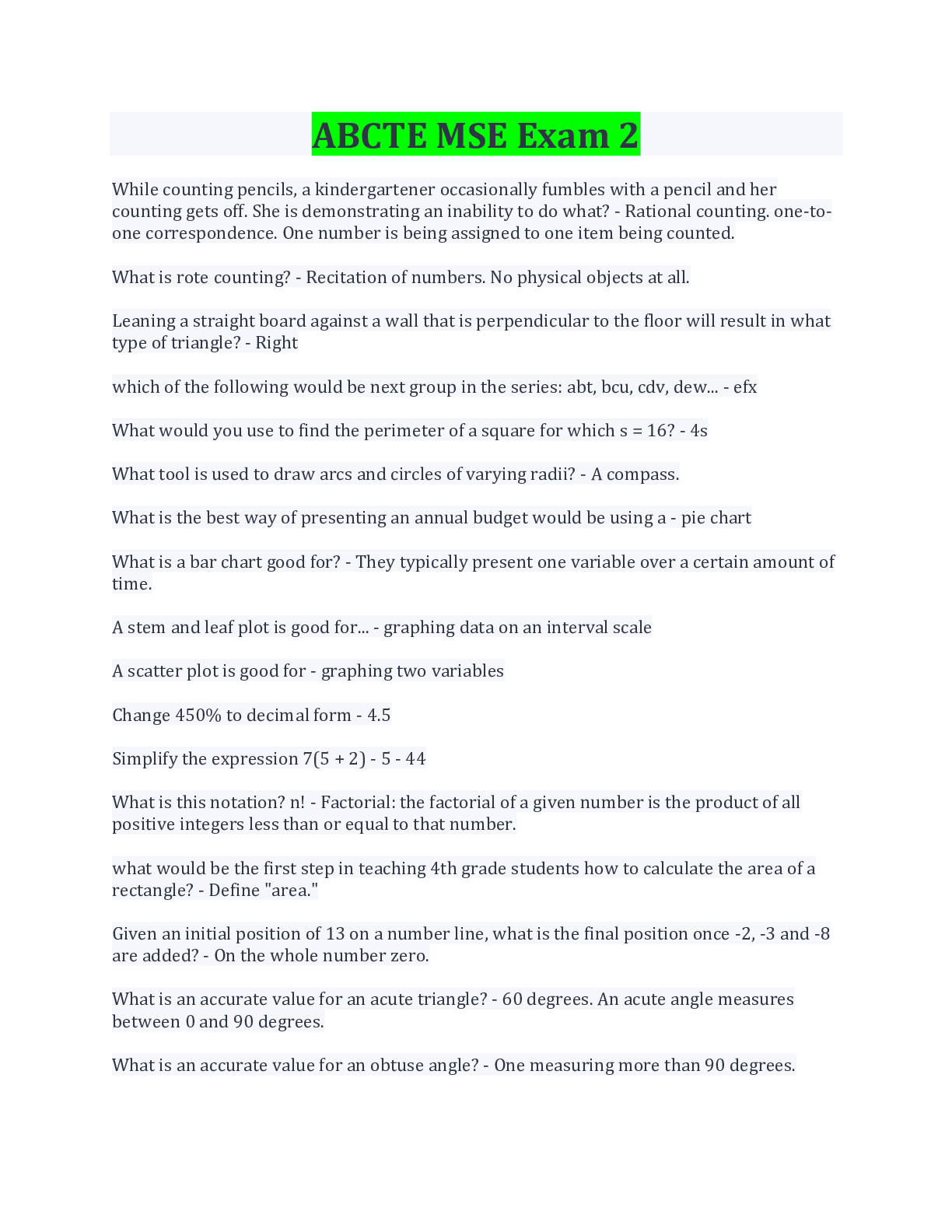
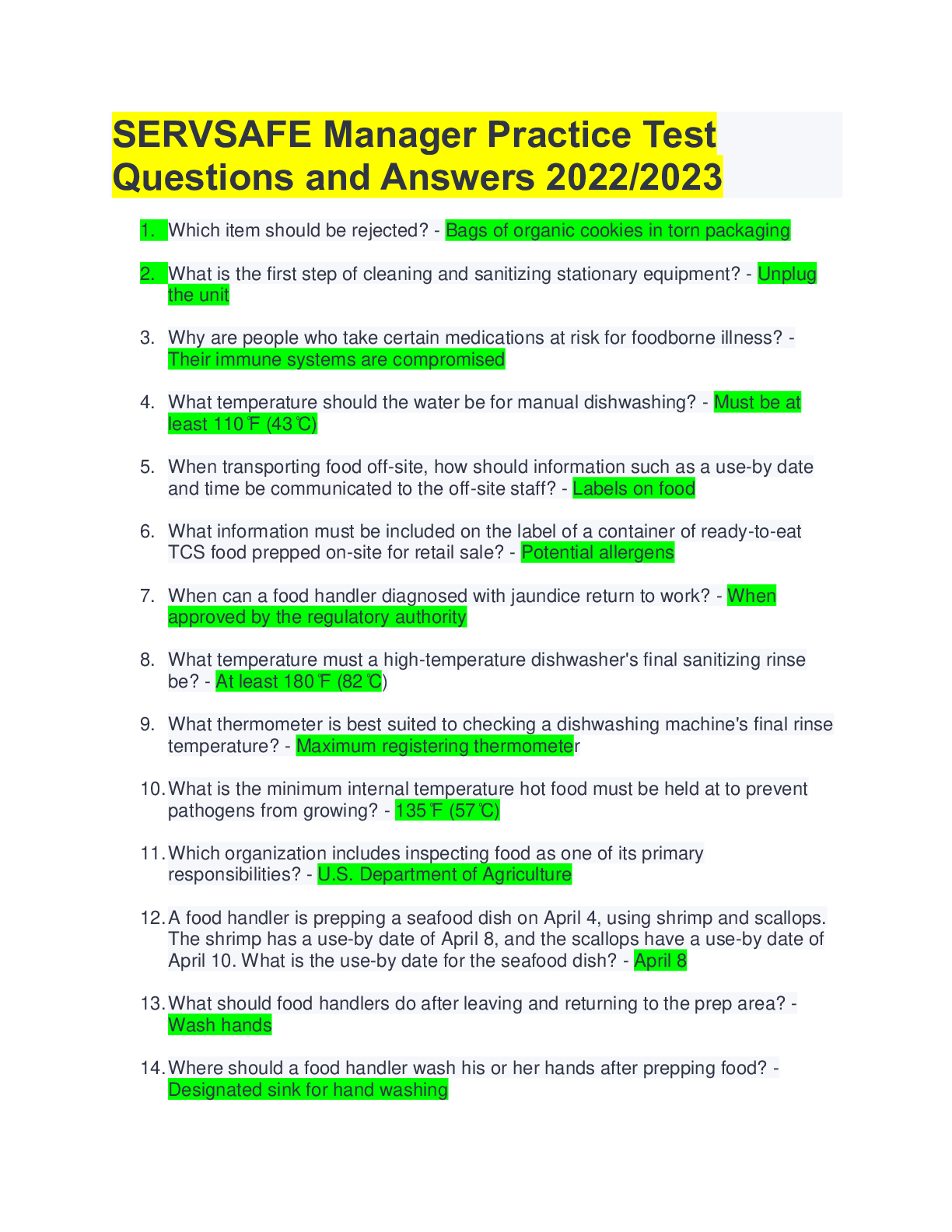

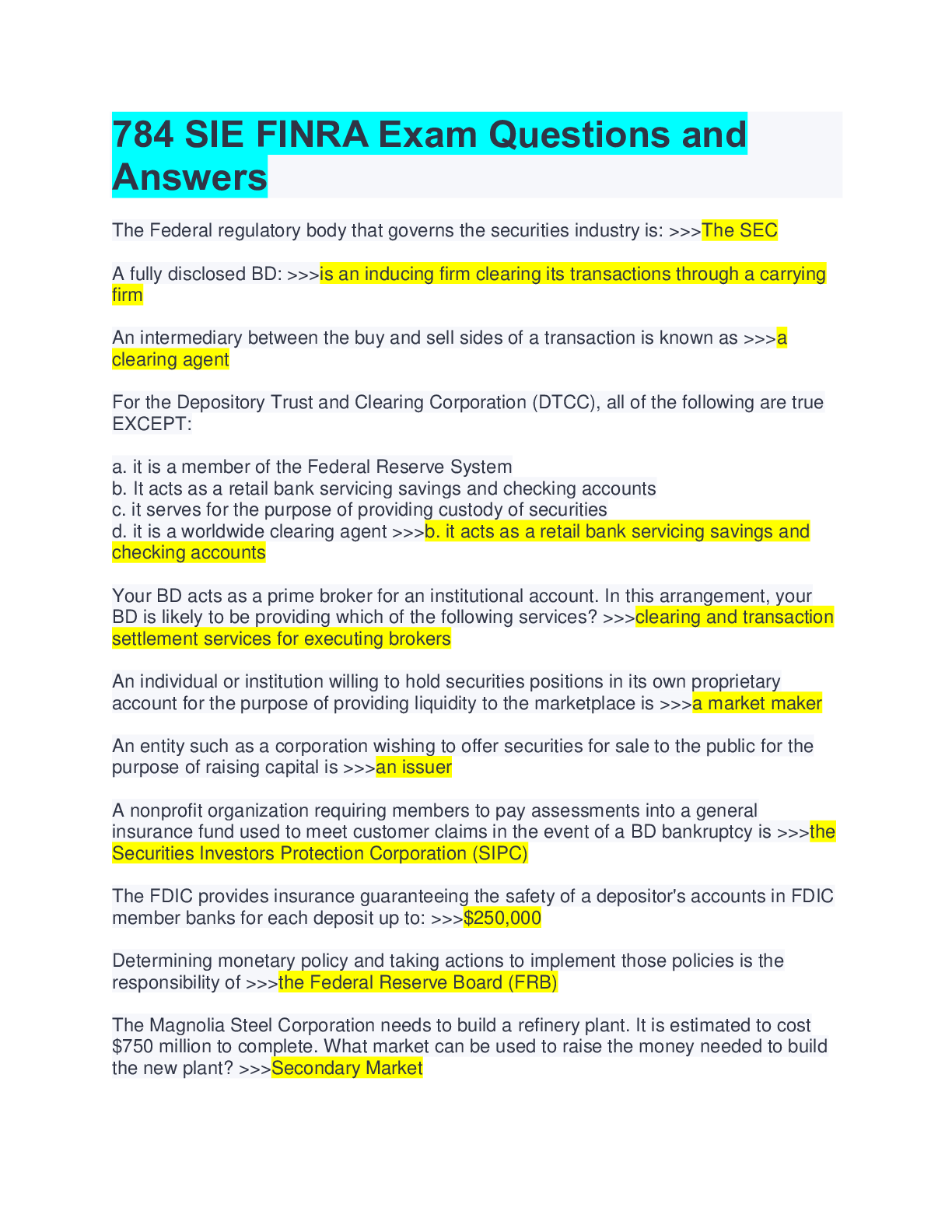
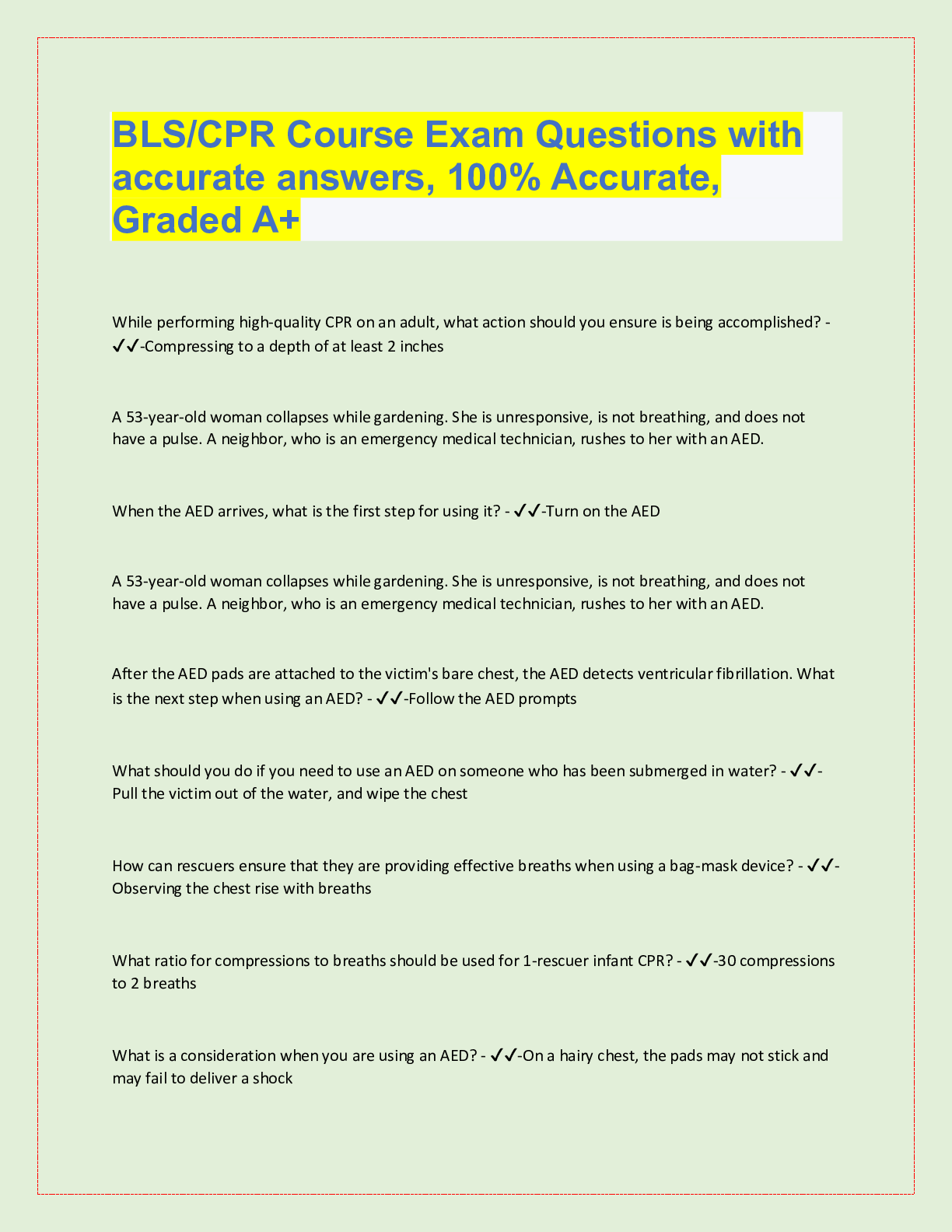
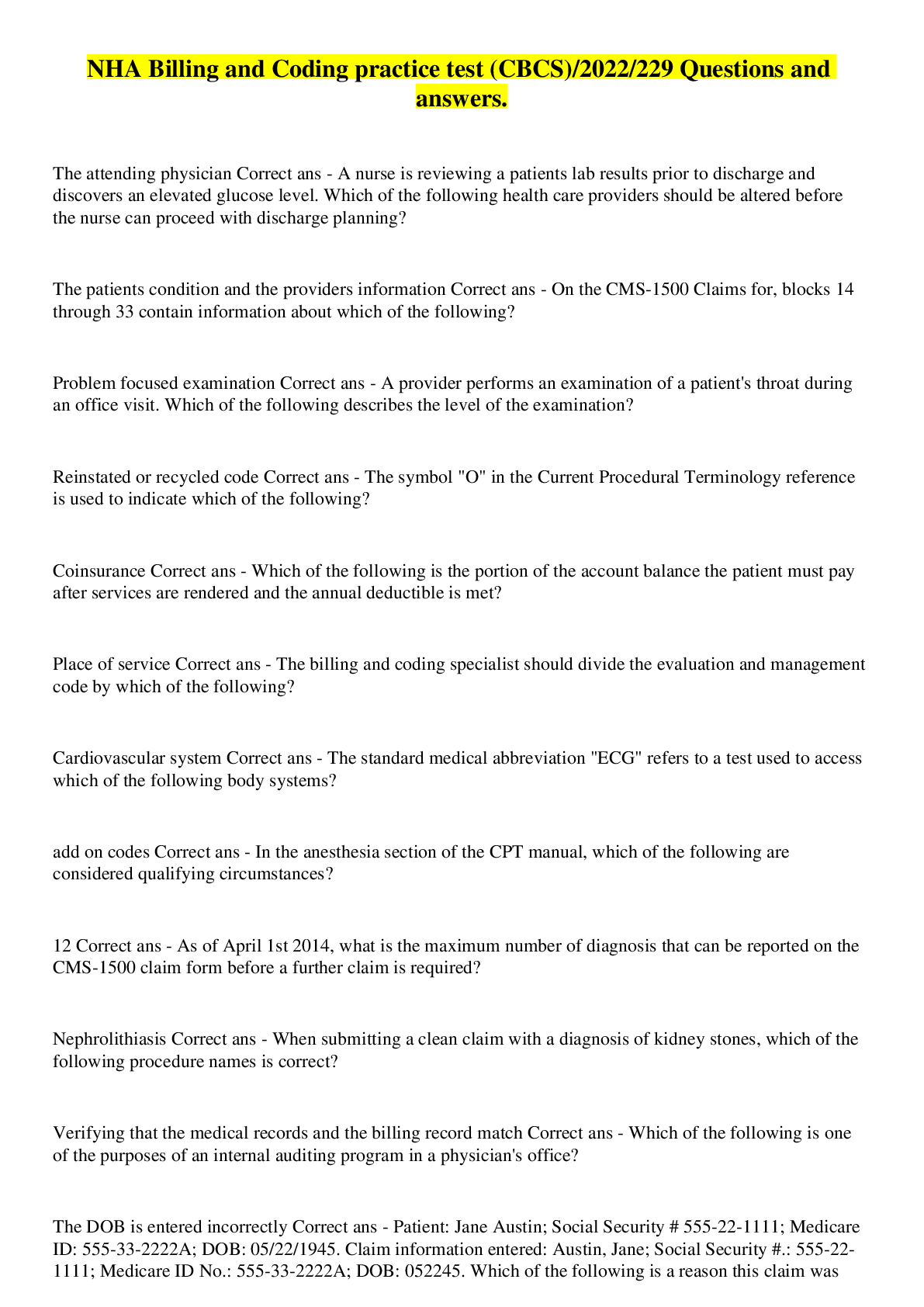
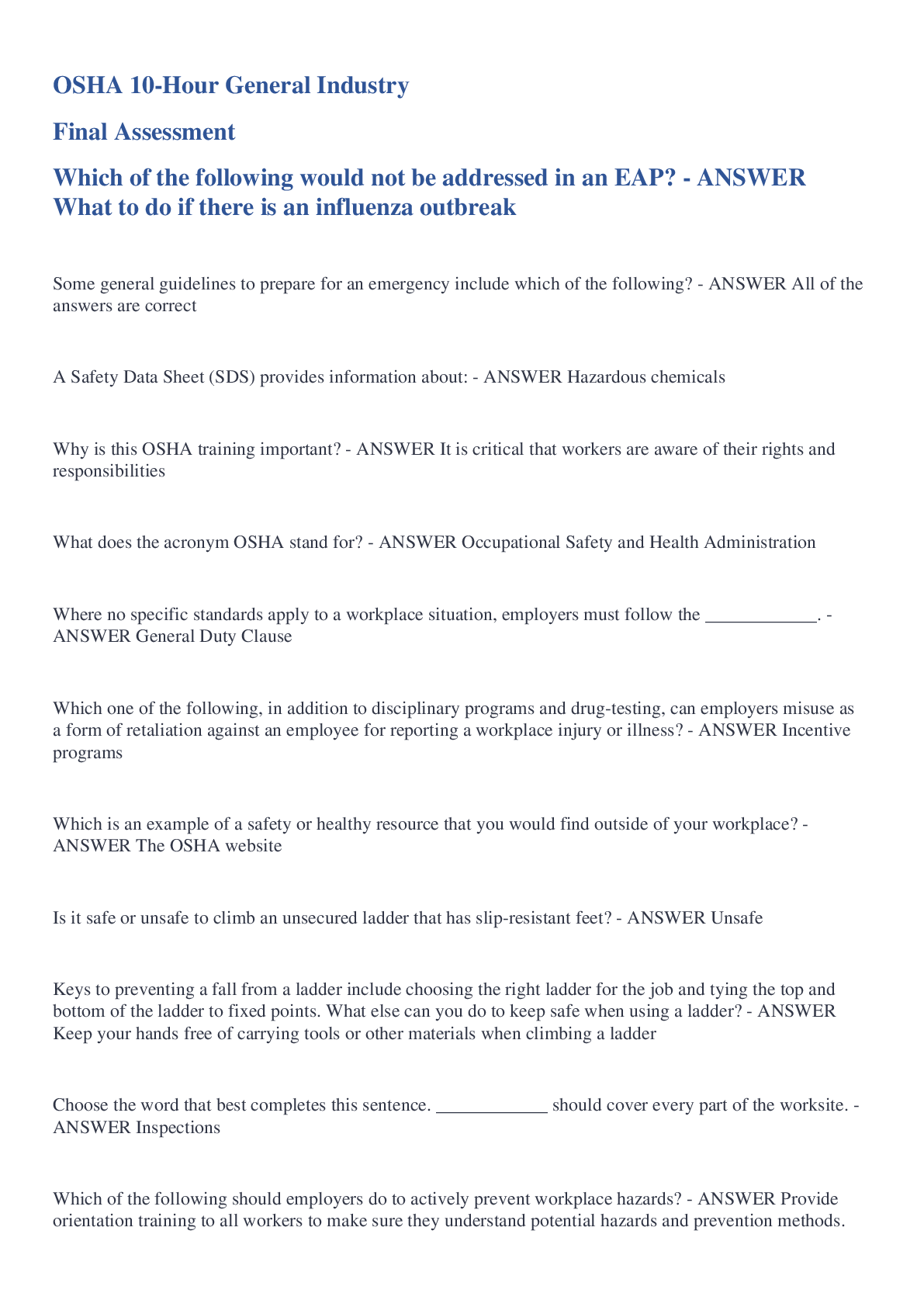

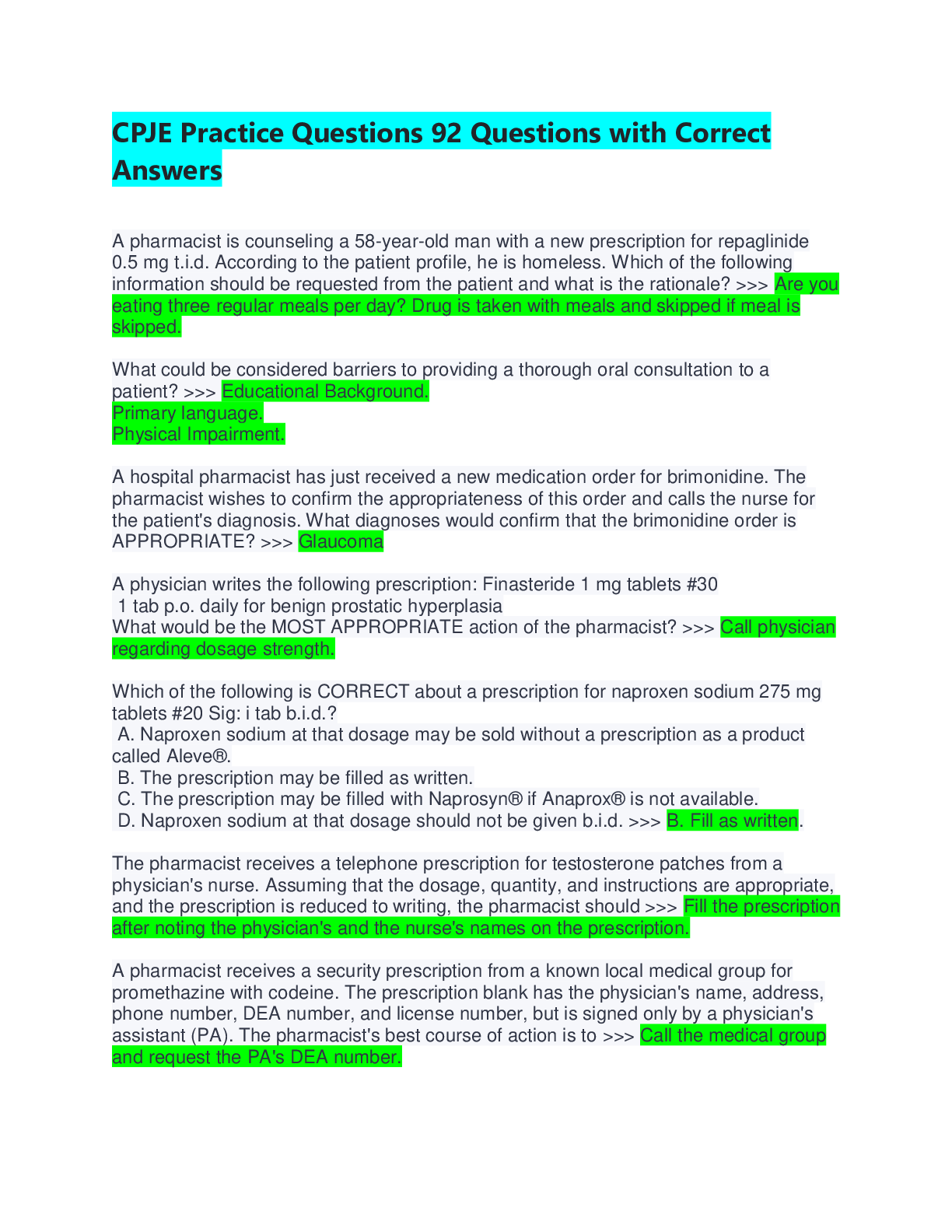
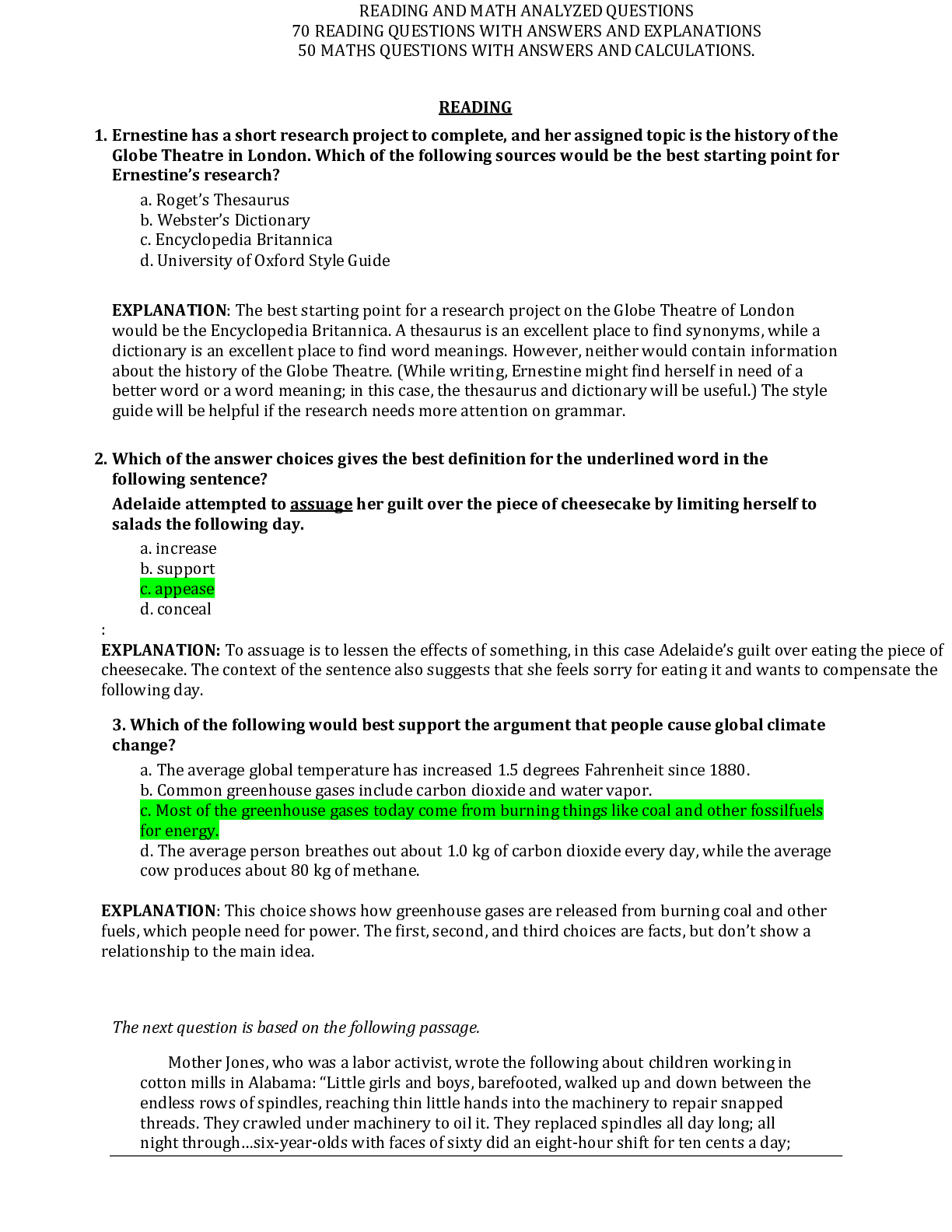
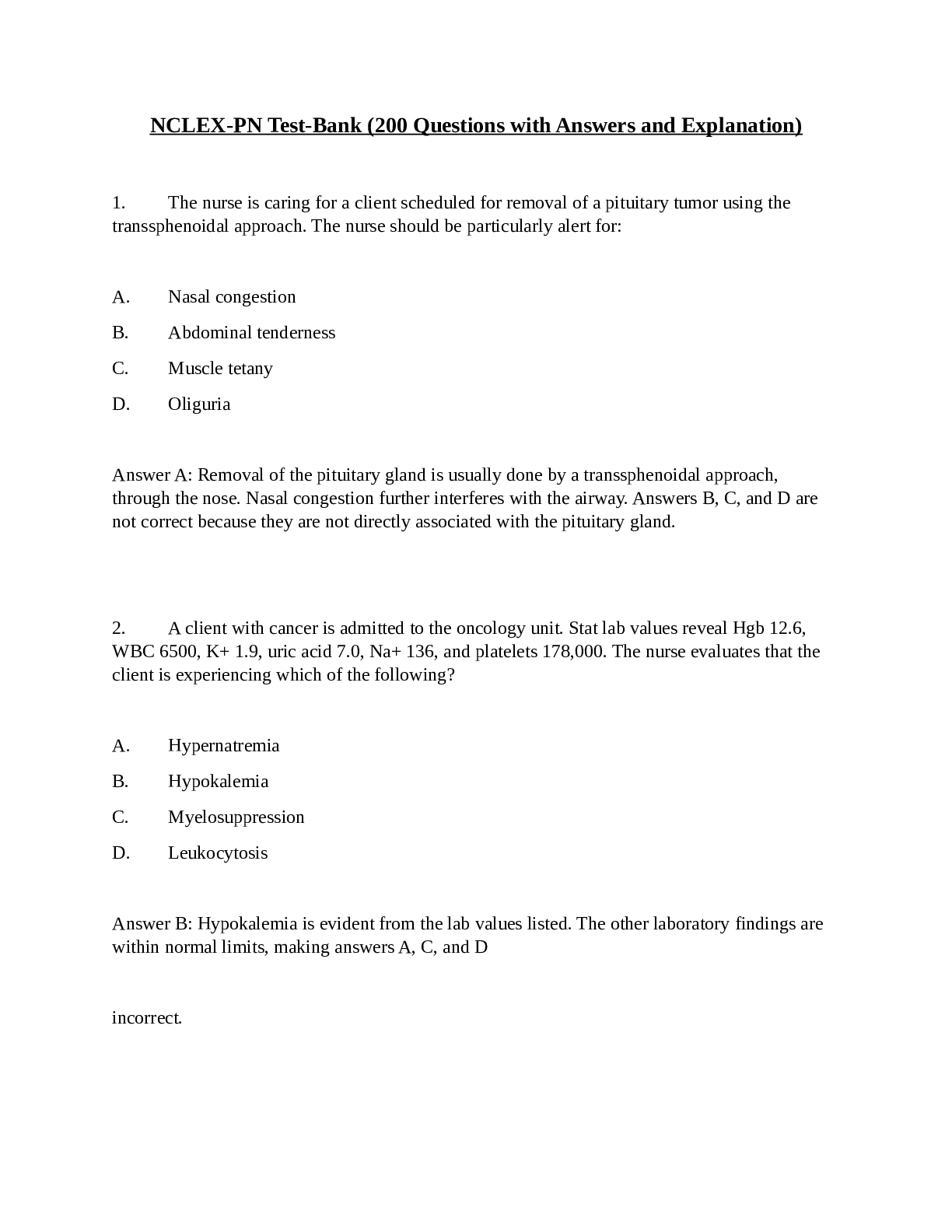
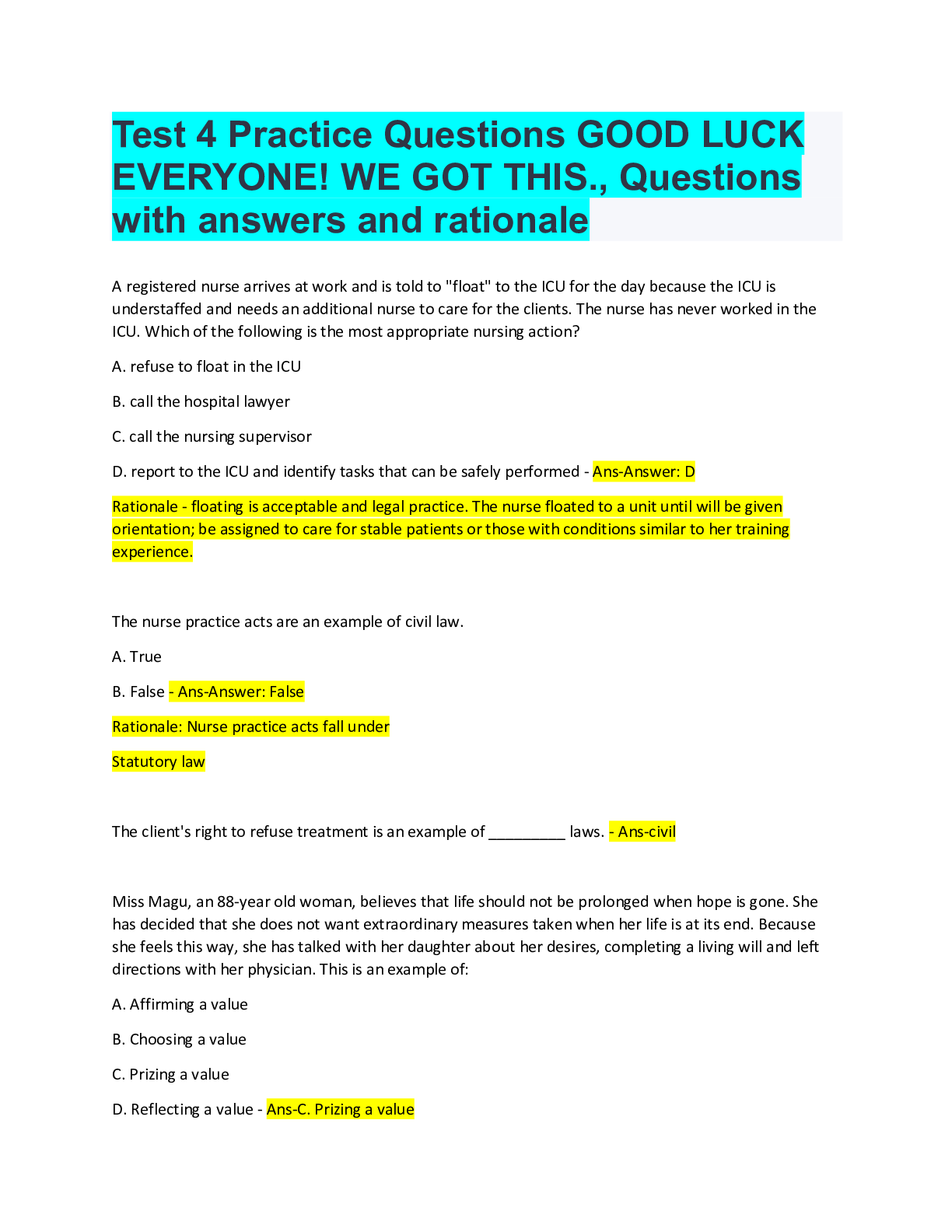
.png)
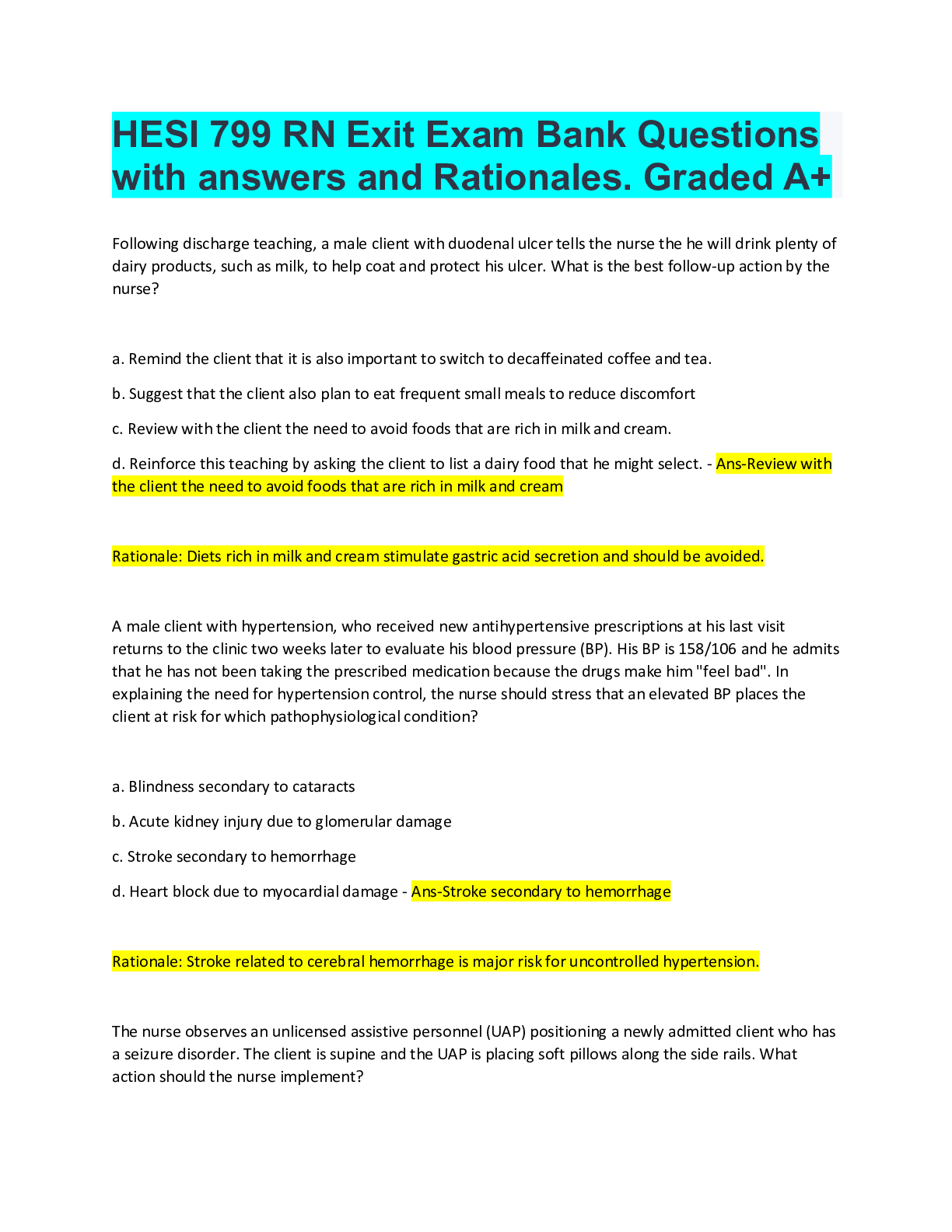
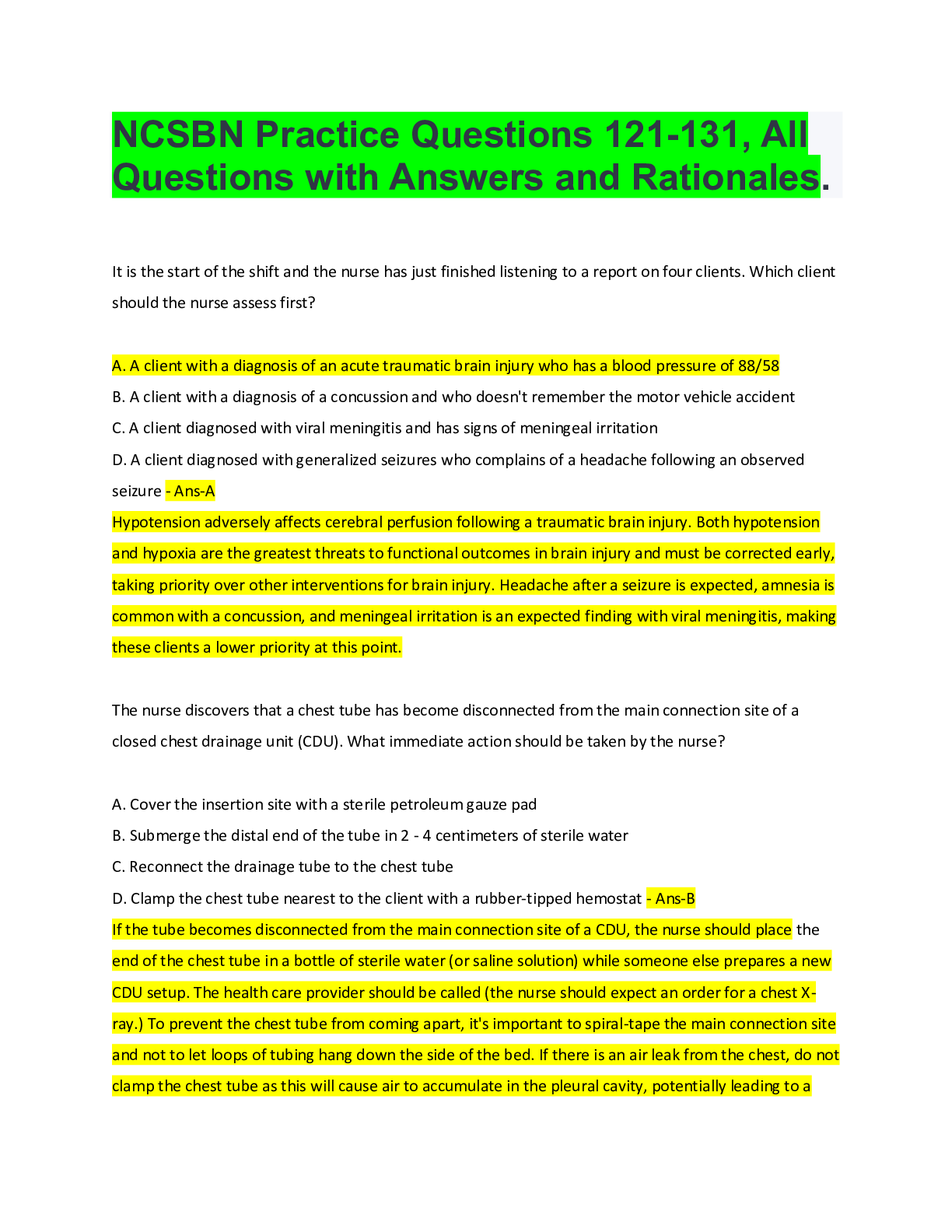
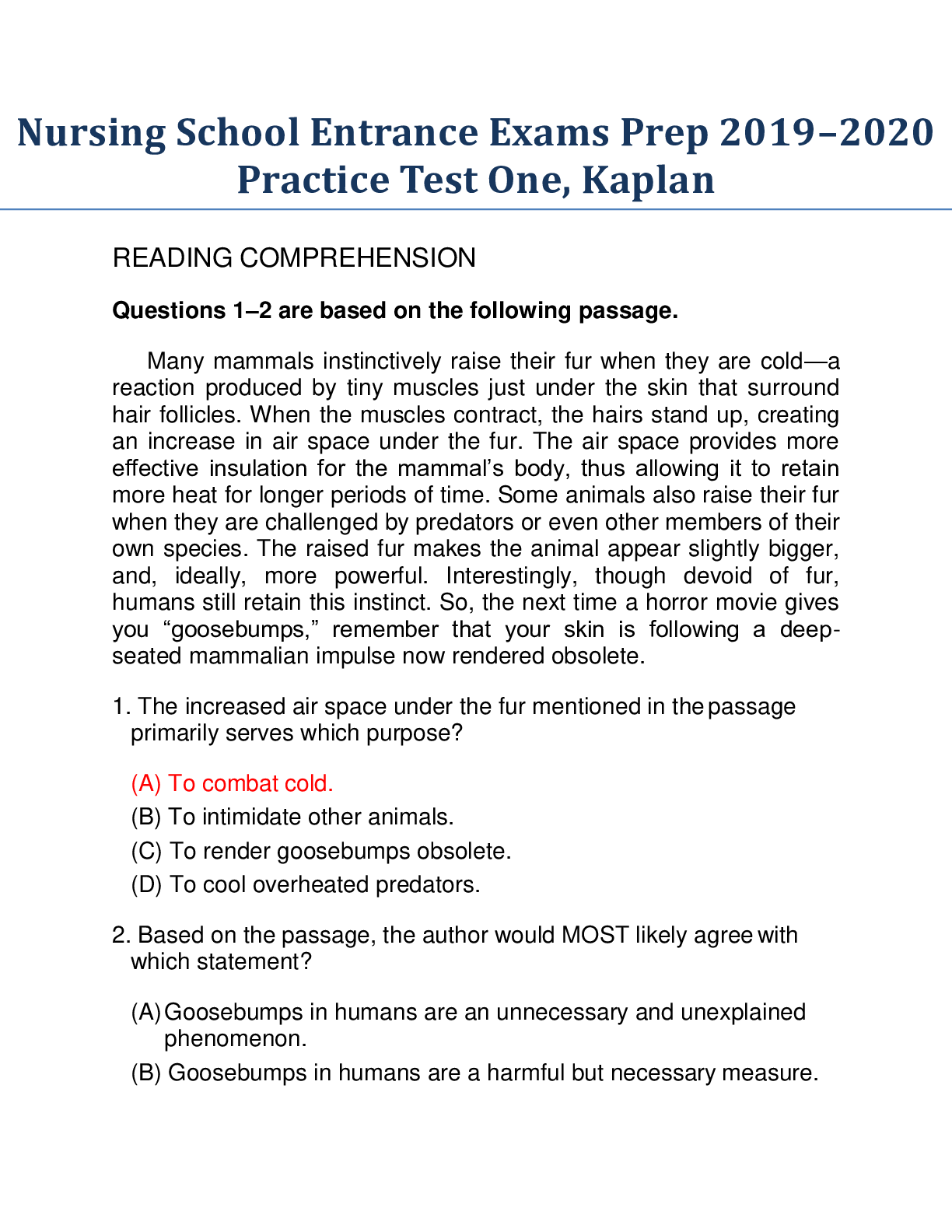
.png)

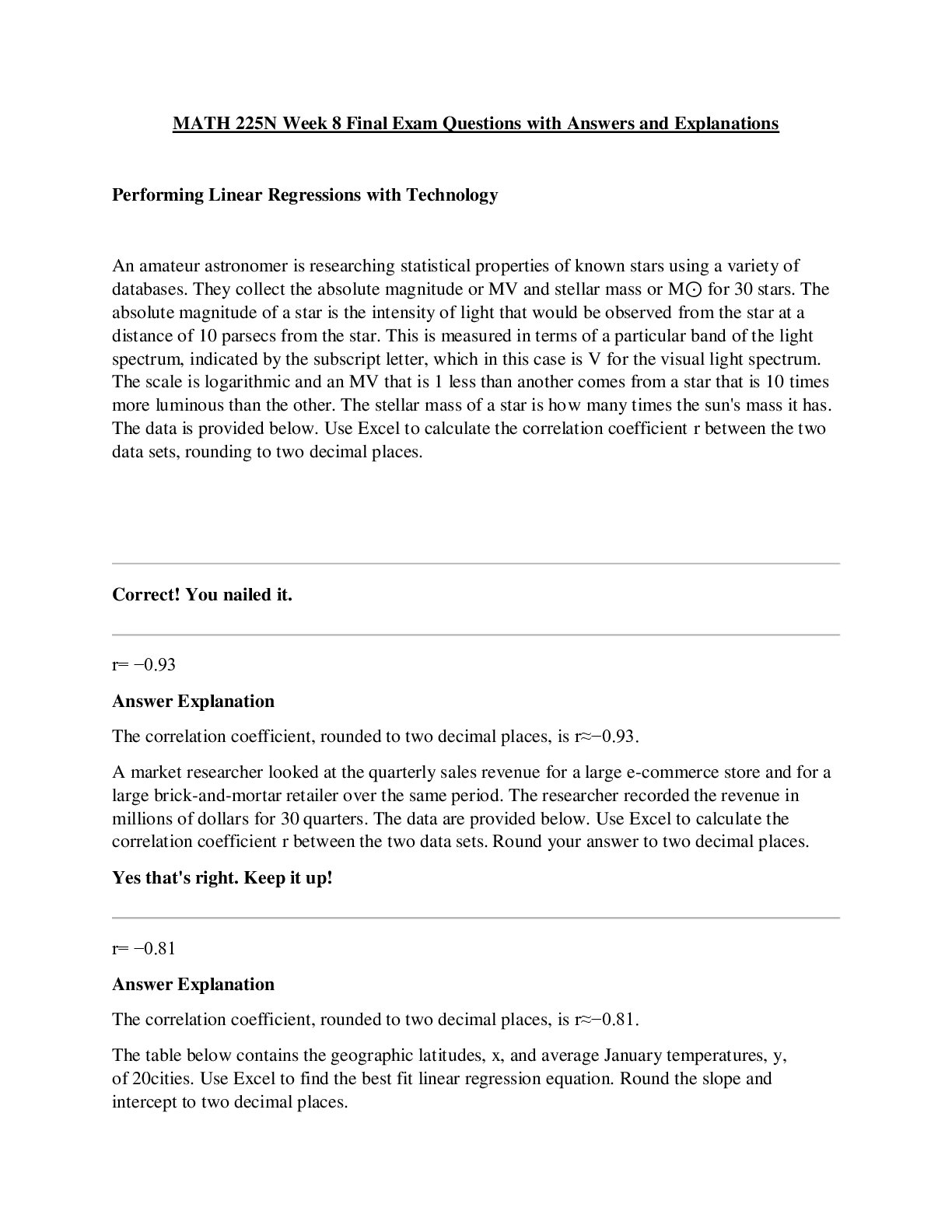
 (2021 Update) WITH ANSWERS AND RATIONALE.png)
